From the street, the approach to the Rotunda, the Thomas Jefferson-designed signature building of the University of Virginia in Charlottesburg, is up a series of steps overlooked by a bronze of Jefferson.
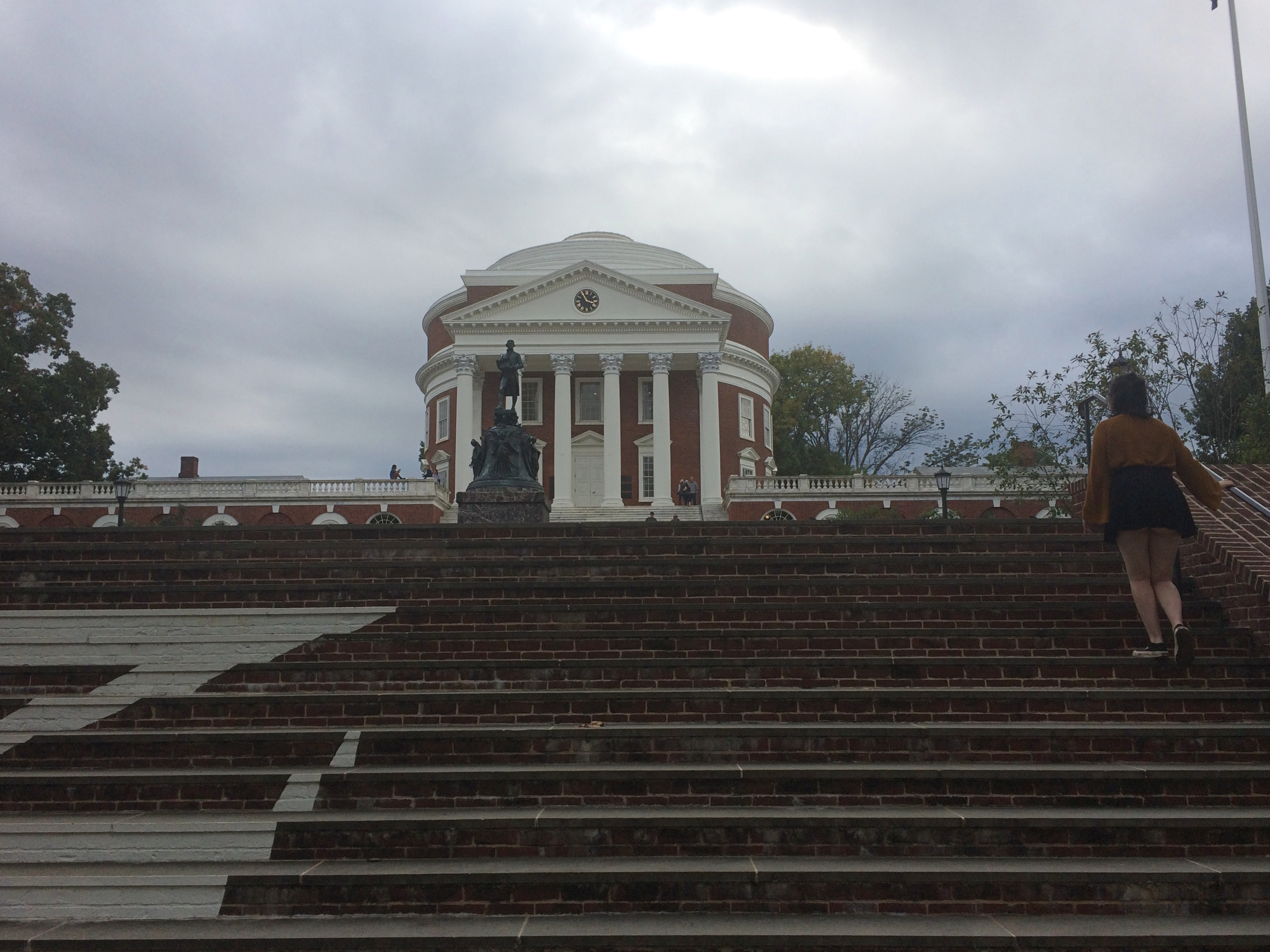
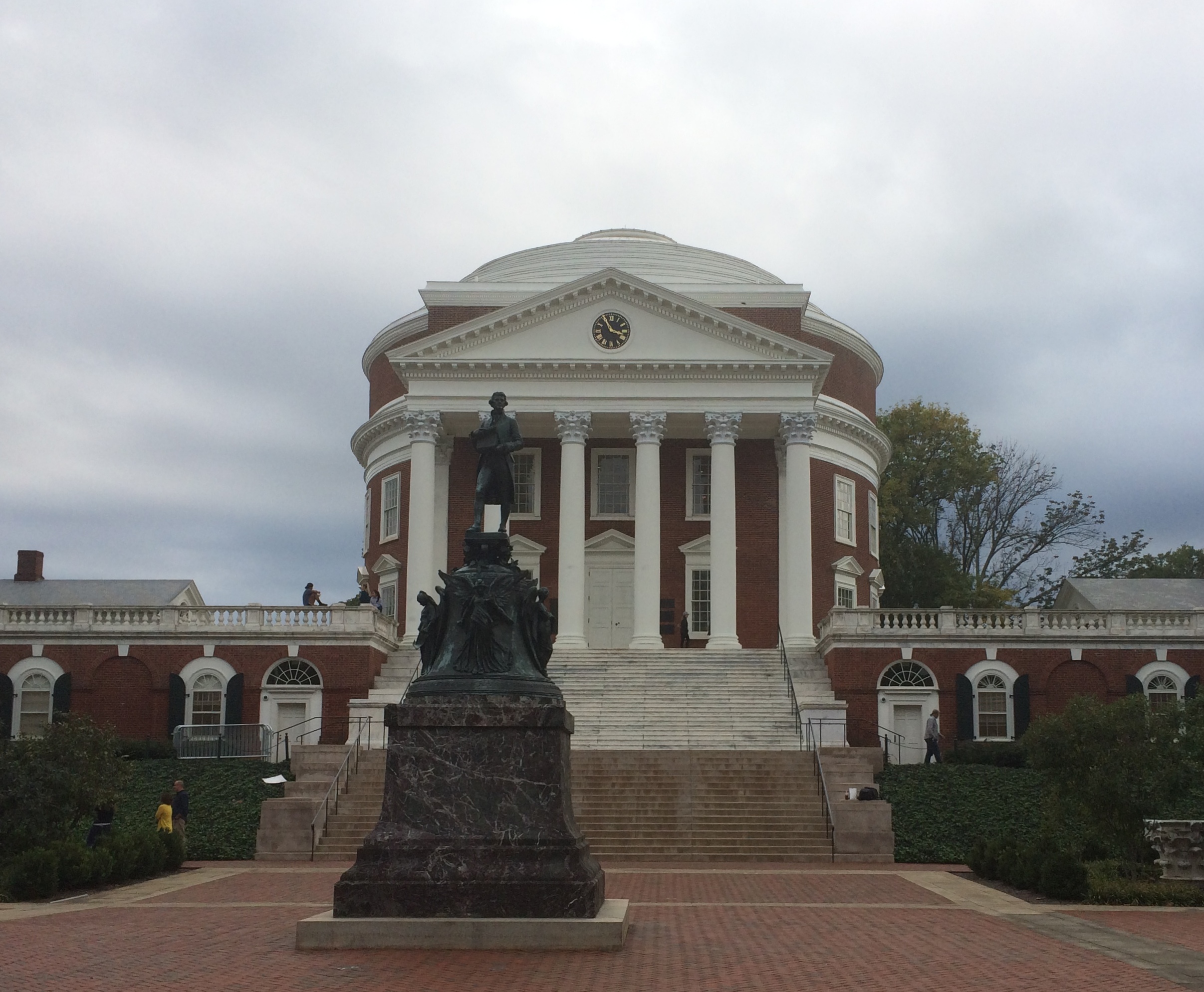 The Rotunda’s entrance is on the other side, facing the wide expanse of the Lawn, which is a quadrangle lawn surrounded by buildings, the likes of which you see at other American college campuses. Though the UVA Lawn had antecedents, its Lawn likely inspired the others.
The Rotunda’s entrance is on the other side, facing the wide expanse of the Lawn, which is a quadrangle lawn surrounded by buildings, the likes of which you see at other American college campuses. Though the UVA Lawn had antecedents, its Lawn likely inspired the others.
“Standing at the north end of the University’s Lawn with its flanking faculty pavilions and student rooms, the Rotunda is based on the Pantheon in Rome,” says a NPS site on World Heritage Sites in the United States.
“Its Lawn continues to serve as a model for centralized green areas on university campuses. Reconstructed in 1899, after being severely damaged in a fire, the Rotunda retains many of its original Jeffersonian design elements and remains a physical embodiment of his illustrious legacy.”
I’d read a bit about the Jeffersonian UVA buildings — collectively the Academical Village — and wanted to look down from the Rotunda balcony at the sweep of the Lawn, as generations have before me. I expected a fine view.
Well, almost.
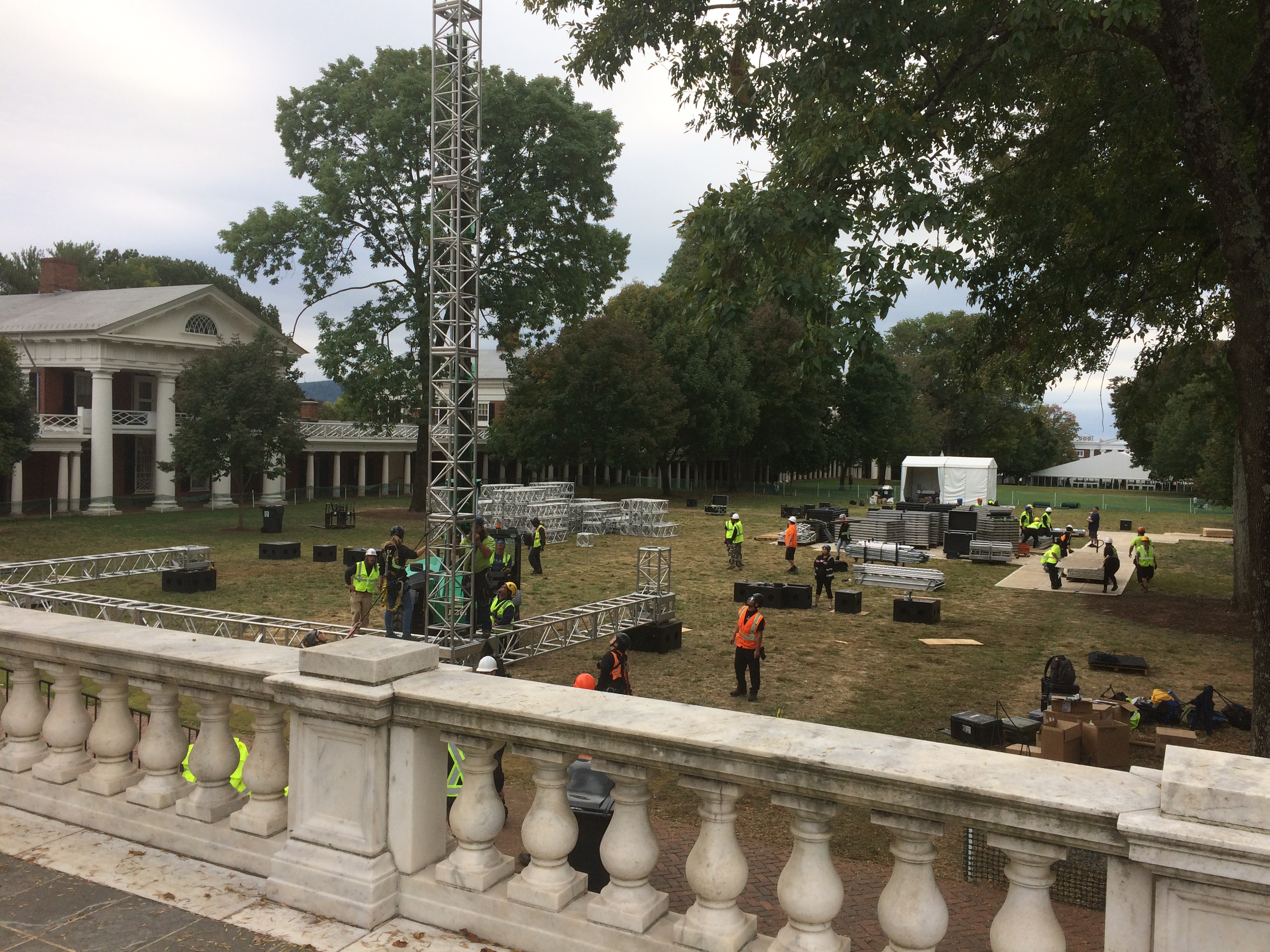 Some kind of event in preparation. Eventually, I would find out what.
Some kind of event in preparation. Eventually, I would find out what.
We’d arrived about an hour before the Rotunda closed, so in we went, to see the stately rooms and artwork. The stateliest space is a floor up, under the dome.
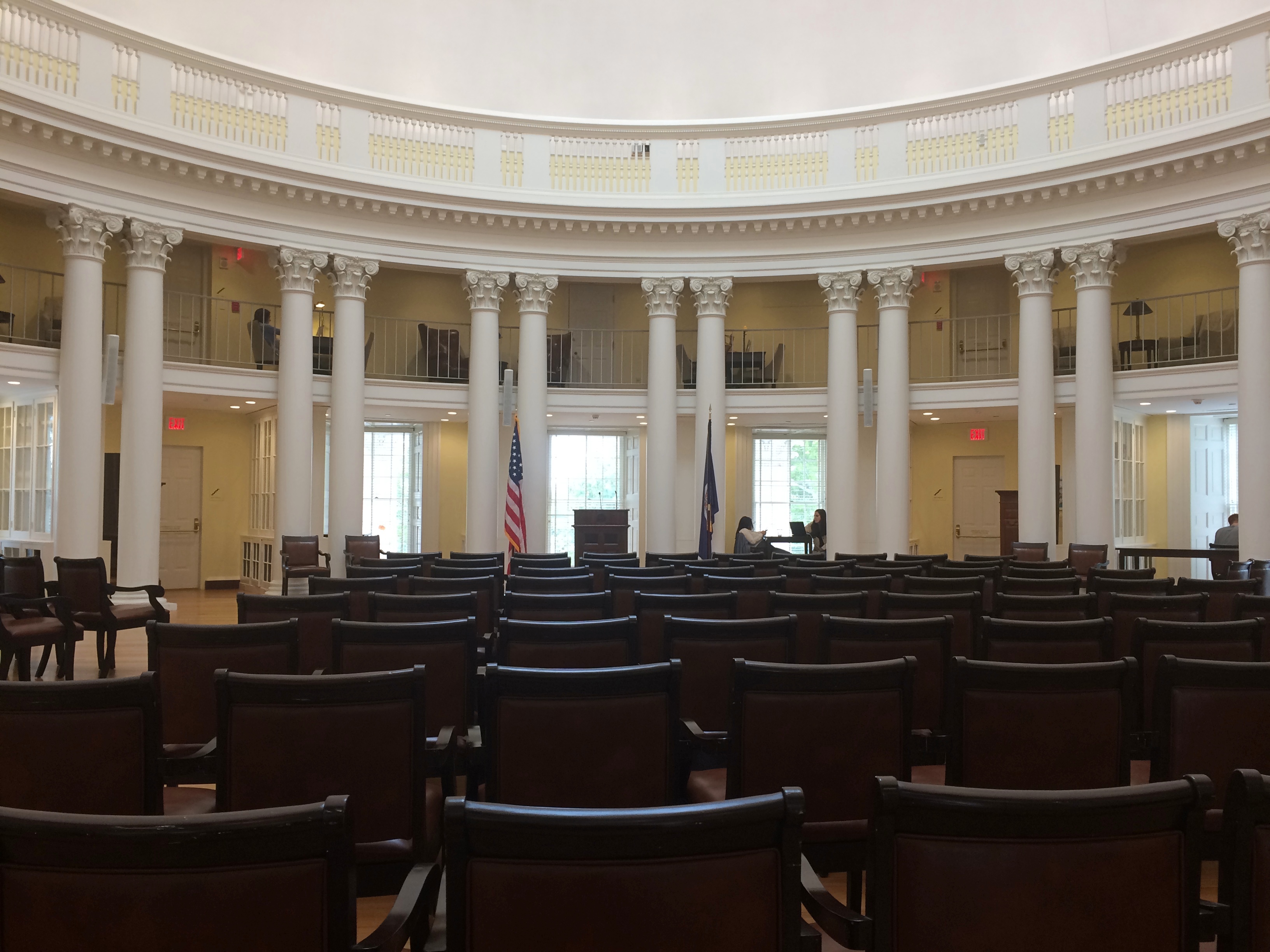 However stately the Rotunda might appear at this moment, it has had a bumpy history, especially the 1895 fire.
However stately the Rotunda might appear at this moment, it has had a bumpy history, especially the 1895 fire.
An oculus is at the tip-top of the dome. Apparently it has a long history of leaking.
Students were tucked away at tables and alcoves in the Rotunda, attending to books and papers but mostly electronics. Besides being a masterpiece of neoclassical design, the brainchild of Thomas Jefferson and part of a World Heritage site, the Rotunda is also a place where students hang out. We too sat down for a few minutes.
When I wanted to go, Ann wanted to stay, relaxing in one of the Rotunda’s comfy chains. So she did, while I headed out into the rest of the Academical Village for the next hour. Maybe she took a light nap while I was gone.
Heading out, I noticed this structure. Not actually part of the Academical Village, but pretty close by.
 The University Chapel. “The Gothic Revival building was designed by Charles Emmett Cassell of Baltimore, the chapel’s cornerstone was laid in 1885, and the chapel was dedicated in 1889… The University Chapel no longer holds regular religious services, but weddings and memorial services still take place inside.”
The University Chapel. “The Gothic Revival building was designed by Charles Emmett Cassell of Baltimore, the chapel’s cornerstone was laid in 1885, and the chapel was dedicated in 1889… The University Chapel no longer holds regular religious services, but weddings and memorial services still take place inside.”
 Some kind of meeting was going on inside when I stopped by, so I didn’t linger too long. From there, I happened on one of the Academical Village’s 10 walled gardens, which are behind the row of buildings that flank the Lawn. Nice, but I suppose spring or summer would be the best time to wander through the gardens.
Some kind of meeting was going on inside when I stopped by, so I didn’t linger too long. From there, I happened on one of the Academical Village’s 10 walled gardens, which are behind the row of buildings that flank the Lawn. Nice, but I suppose spring or summer would be the best time to wander through the gardens.
I made my way along the Lawn’s side buildings. I hadn’t read enough about the Academical Village to realize that some of the buildings still include student rooms; originally they were the school’s only housing. A few doors were open and even a few Sunday-afternoon student get-togethers were visible inside. Must be special rooms in the scheme of UVA student housing. What do you have to do to be assigned one of them? (The polite way to ask that question.)
Further down the Lawn, I was hoping for a good look at the Rotunda. Well, almost.
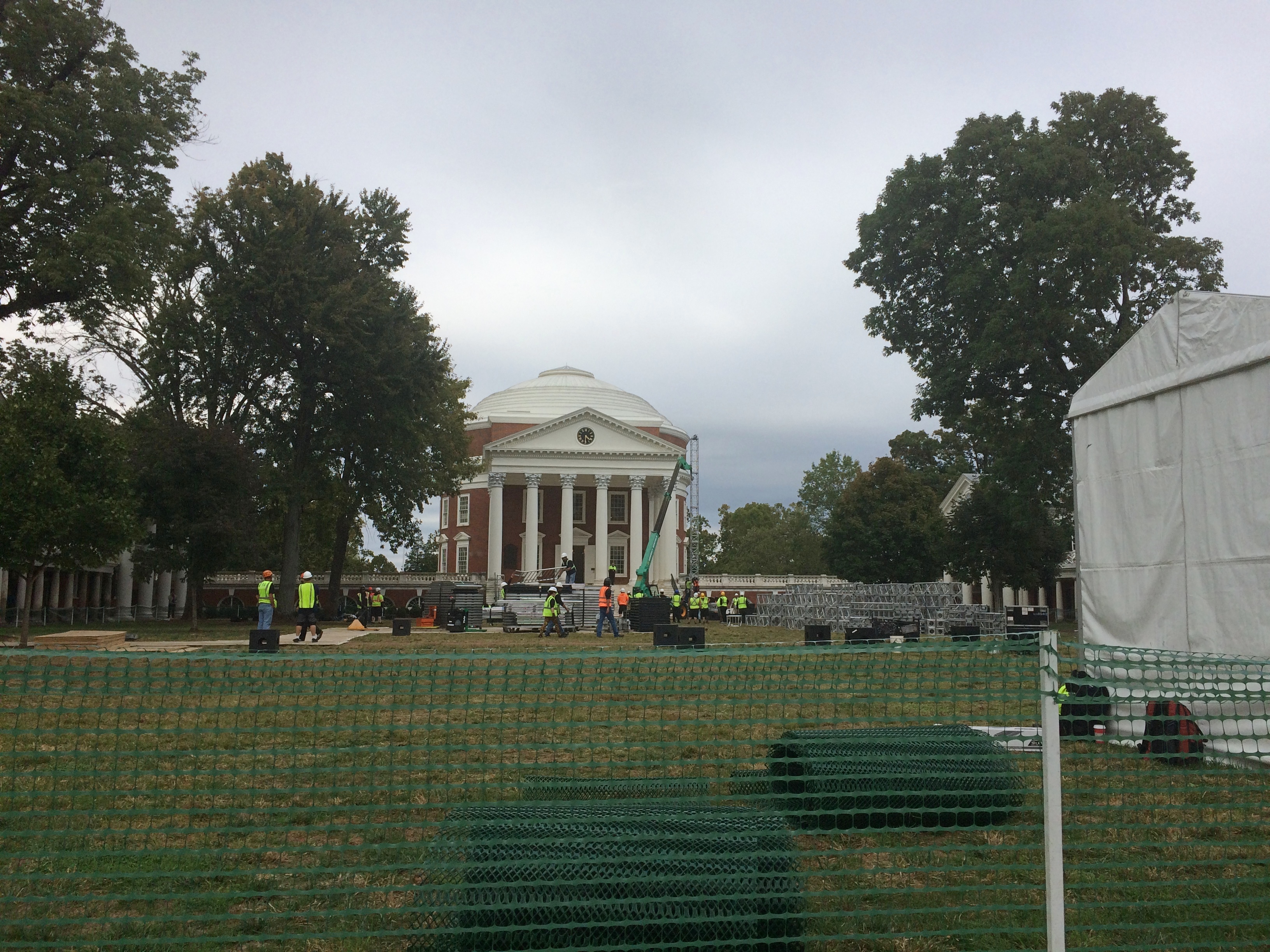 At the south end of the Lawn is the impressive Old Cabell Hall.
At the south end of the Lawn is the impressive Old Cabell Hall.
 Topped by a Greek inscription dating from a time when students studied Greek. Also, a time when optimistic inscriptions were carved on prominent buildings. The Greek is John 8:32, “And ye shall know the truth, and the truth shall make you free.”
Topped by a Greek inscription dating from a time when students studied Greek. Also, a time when optimistic inscriptions were carved on prominent buildings. The Greek is John 8:32, “And ye shall know the truth, and the truth shall make you free.”
“A bookend to the University’s Rotunda, Cabell Hall was one of three buildings designed for the south end of the Lawn by architect Stanford White of McKim, Mead & White,” UVA says. “Completed and dedicated in 1898, the building was named in honor of Joseph C. Cabell, a member of both the Virginia legislature and the UVA Board of Visitors, and a steadfast ally of Mr. Jefferson as he sought to win state approval and funding for the University.
“Since 1951, Cabell Hall has housed the McIntire Department of Music and the Music Library as well as the University’s principal lecture and concert hall. Its auditorium has a seating capacity of 851 and hosts more than 200 public performances and events each year.”
Including a performance on October 13. I wandered in and heard music coming from the auditorium. No admission, so I sat in for a few minutes, and was treated to a bit of a Anyango Yarbo-Davenport violin recital (I don’t know what she was playing; but here’s a recording of her work.)
I would have stayed longer, but I wanted to get back to the Rotunda to meet Ann at closing time. Just outside Old Cabell, workers were erecting a large temporary pavilion — which is why I didn’t get a broader view of Old Cabell. What was all the hubbub on the Lawn, anyway?
Then I saw a sign that explained all: a coming fundraising event. Learning is fine and all, but fundraising — that’s job one for today’s Academical Village.
The university also notes: “Directly in front of Cabell Hall stands a 1907 bronze sculpture, created by Moses J. Ezekiel, of blind Homer and his guide.”
Homer was inside the temporary pavilion, which was a work site, so I didn’t go in. I could see the shadow of the statue from outside.
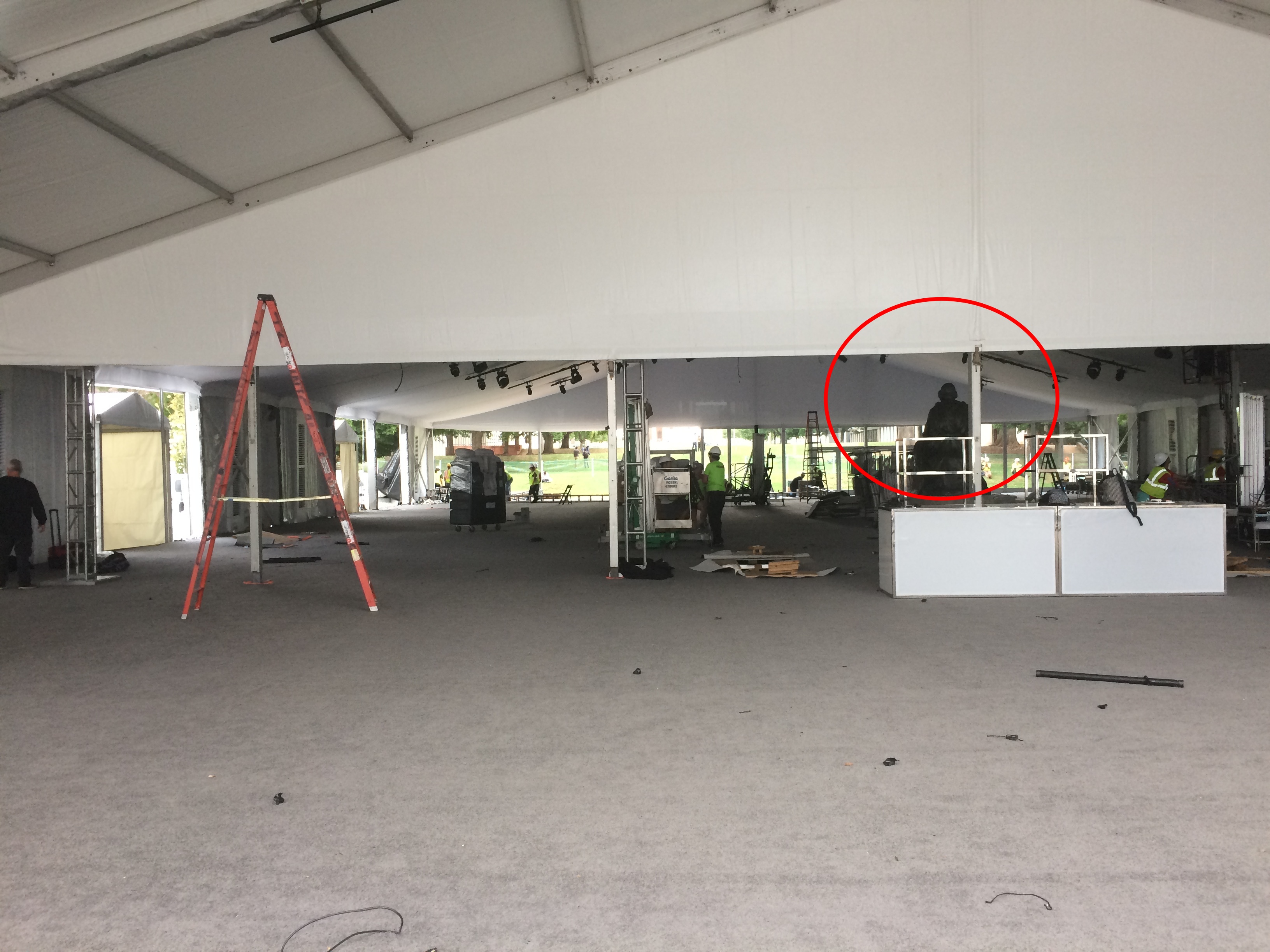 Another sign called the upcoming event Brunch With Homer. The idea amused me. I’d pony up a few dollars for UVA if I thought I could see a Homer reenactor reciting one of his epics over a sumptuous brunch. Abbreviated and in English, of course, to resonate with a modern North American audience. But I don’t think that’s what the event planners had in mind.
Another sign called the upcoming event Brunch With Homer. The idea amused me. I’d pony up a few dollars for UVA if I thought I could see a Homer reenactor reciting one of his epics over a sumptuous brunch. Abbreviated and in English, of course, to resonate with a modern North American audience. But I don’t think that’s what the event planners had in mind.

